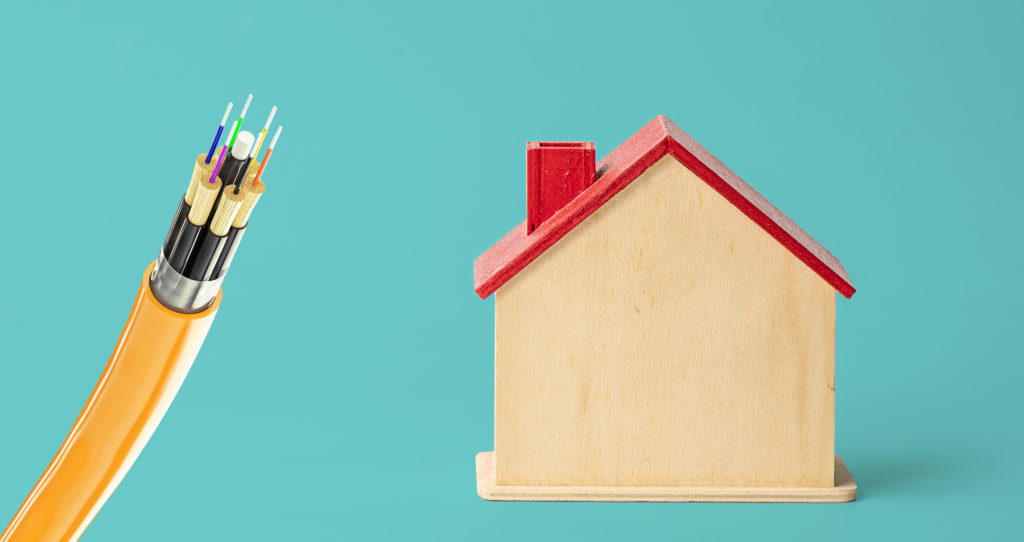
What Do I Need to Install Fiber-Optic Internet in My House?
1 commentOnce you’ve made the decision to connect your services—from internet to TV to phone—via fiber-optic, you’ve done the hard work. Now it’s time to think about the installation. Here’s your guide on getting ready for your install. And having it done professionally by your provider is recommended. It’s much easier, and you’ll benefit from their experience.
How will fiber get to your house in the first place?
Fiber-optic is delivered via a cable, either from underground or an aerial power pole, that goes right into your house. This is called Fiber to the Home, which is just what you want if you can get it. Your internet service provider will bring it right to your door.
Of course, it’s what’s inside the cable that counts. Fiber-optic technology sends the data as pulses of light through hair-thin strands of fiberglass. Information travels practically at the speed of light, giving you more reliability and less latency or buffering.
You should not need to purchase or provide anything for your installation. Your provider will come to your home with everything you need. That includes your Optical Network Terminal (ONT), which converts the optical signal coming through the fiber into signals for your router and from your router to any extenders, if necessary. You shouldn’t need to have any backup equipment. Your ISP usually will supply a router, or you may purchase your own.
Who does what on install day
|
You |
Your technician |
|
Clear a path at the access point where service will enter your home, either in your garage, basement or a closet |
Installs the ONT (Optical Network Terminal) |
|
Make sure a grounded outlet is accessible |
Connects ONT to power |
|
Have a router location designated and clear of all clutter |
Runs wires from ONT to the router |
|
Tell your technician about any known dead spots in your house |
Tests signal strength with a Wi-Fi scan and advises on your need for extenders to improve coverage |
|
Sit back and relax |
Connects extenders if you need them |
|
Connect all your devices to your new fiber-optic network |
Checks to make sure that everything from your router to computers, tablets, smart home devices and wireless phones are all working |
A few tips to make the most of your new fiber network
Router location. Pick a central location in your home, on the second floor, if you have one. Install it up off the floor. Your technician can do a walk-through with you and give you advice on your selected location and make a different recommendation.
Use your provider’s router. It’s tempting to invest in your own router. Here’s the catch: You will be 100% responsible for the software updates and maintenance. If you use the router from your internet service provider (ISP), you won’t have to worry about software updates, as they’re applied automatically. And if something goes wrong, your provider can help resolve issues by “seeing” the state of your home network devices. What’s more, they’ll take responsibility for repair or replacement.
VoIP phone service will give you a backup battery. Your fiber-optic VoIP phone service will have a battery backup located in the ONT. If there’s a power outage in your home, you’ll still have many hours to use the phone and call for any emergency help you might need. If you’re getting only internet service, you won’t have backup for your internet and router. All components need to be powered to work.
Make note of your network name and password. Your technician can show you where these are, right on the label on your router. Take a picture of the label with your smartphone. After your install, when you’re settling in to your new service, you can take the time to change these to more personal ones of your choosing.
As soon as your fiber-optic installation is complete, you can start enjoying it.


No two installations are the same, some don’t require any drilling, some do. Typically, our Fiber equipment is wall mounted. Sue